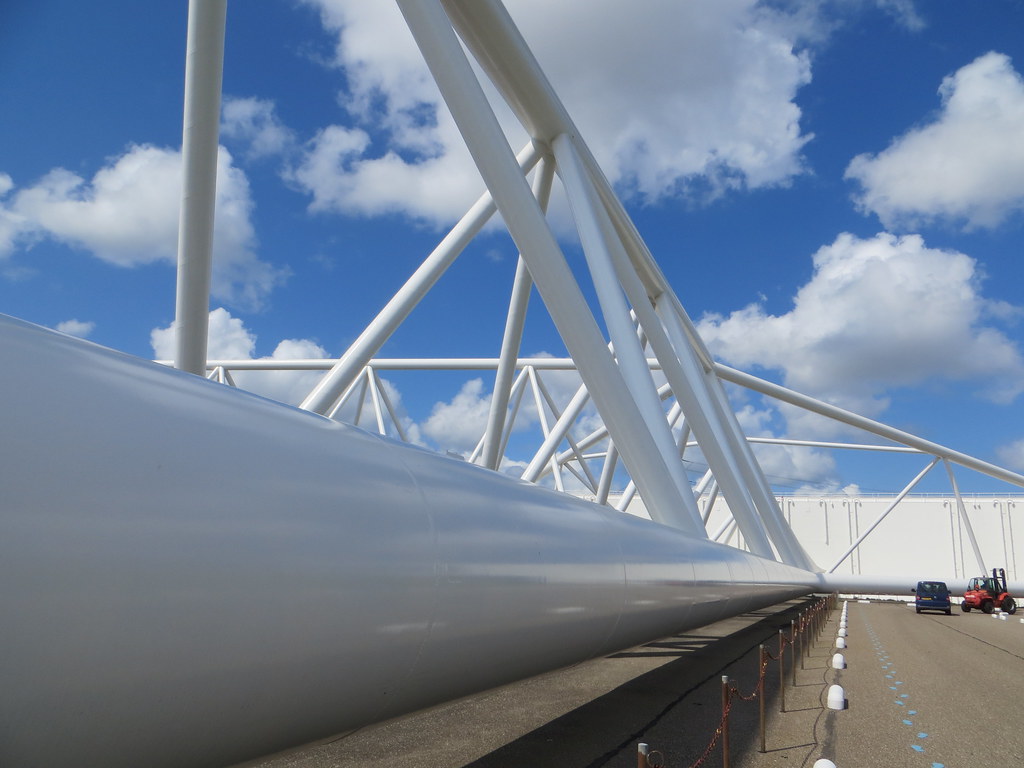 | ||
| One half of the great storm surge barrier across the estuary of the Maas (Meuse) at the Hook of Holland: |
 |
| A model in the Keringhuis to show how it all works |
Here at the Hook, these two great arms can, at a few hours' notice (automatically triggered by sensors out at sea), be floated in their dry docks, then out across the river to be sunk on to underwater sills, so as to hold back any anticipated storm surge, such as the one that caused such devastation in 1953. Once the danger is passed, the arms can be pumped out and floated back into their docks.
The Keringhuis is the information centre in that modest-looking grey shed, exploring and explaining (with a strong orientation towards engaging children) the problems and issues involved, not only in holding back flooding from the seas (something the inhabitants of the Netherlands have had to do since human habitation in the area first began), but also coping with flood waters coming down the rivers from elsewhere in Europe, and with periods of drought, and all while keeping open the trade routes into Rotterdam.
So it's a complex series of problems, with different answers for different locations, and not just in the different designs of massive barriers. Where once the answer was, almost, as many dikes as possible, now it's a matter of managing water in and out. Increasingly they look to work with nature, for example, encouraging the movement of coastal sandbanks so that beaches and dunes are built up, or in places "de-poldering" land so that surplus river water can be stored in lakes (which has meant re-settling people, the difficulties of which are rather skated over in the exhibition) and released as necessary, and other parts reverting to marshy nature; some dikes, being largely peat, dry out in increasingly hot, dry summers, so they have to be (perhaps counter-intuitively) watered to stop them crumbling away.
The statistics and superlatives of the engineering are impressive, especially if you book a guided tour, where the guide will take you under the main structure:
 |
 |
 |
| Those lower struts have to be regularly repainted on the inside as well as out - and the steel is apparently 7cm thick. |
If anyone knows how to (attempt to) keep the sea at bay it’s the Dutch.
ReplyDeleteHeavens! I was asleep at the switch! You had some entries! I was glad to see and read them.
ReplyDeleteYes, London is as flat as a pancake really, isn't it? And there were some deadly floods before the Thames barrier - many thanks to the dutch!
ReplyDeleteSx